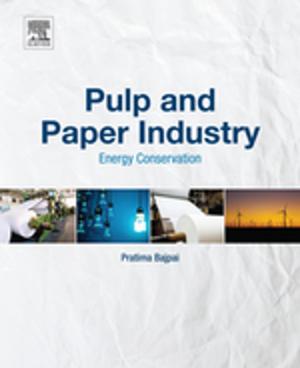| Author: | Ibrahim Dincer, Calin Zamfirescu | ISBN: | 9780128017487 |
| Publisher: | Elsevier Science | Publication: | August 5, 2016 |
| Imprint: | Elsevier | Language: | English |
| Author: | Ibrahim Dincer, Calin Zamfirescu |
| ISBN: | 9780128017487 |
| Publisher: | Elsevier Science |
| Publication: | August 5, 2016 |
| Imprint: | Elsevier |
| Language: | English |
Sustainable Hydrogen Production provides readers with an introduction to the processes and technologies used in major hydrogen production methods. This book serves as a unique source for information on advanced hydrogen generation systems and applications (including integrated systems, hybrid systems, and multigeneration systems with hydrogen production). Advanced and clean technologies are linked to environmental impact issues, and methods for sustainable development are thoroughly discussed.
With Earth’s fast-growing populations, we face the challenge of rapidly rising energy needs. To balance these we must explore more sustainable methods of energy production. Hydrogen is one key sustainable method because of its versatility. It is a constituent of a large palette of essential materials, chemicals, and fuels. It is a source of power and a source of heat. Because of this versatility, the demand for hydrogen is sure to increase as we aim to explore more sustainable methods of energy.
Furthermore, Sustainable Hydrogen Production provides methodologies, models, and analysis techniques to help achieve better use of resources, efficiency, cost-effectiveness, and sustainability. The book is intellectually rich and interesting as well as practical. The fundamental methods of hydrogen production are categorized based on type of energy source: electrical, thermal, photonic, and biochemical. Where appropriate, historical context is introduced. Thermodynamic concepts, illustrative examples, and case studies are used to solve concrete power engineering problems.
- Addresses the fundamentals of hydrogen production using electrical, thermal, photonic, and biochemical energies
- Presents new models, methods, and parameters for performance assessment
- Provides historical background where appropriate
- Outlines key connections between hydrogen production methods and environmental impact/sustainable development
- Provides illustrative examples, case studies, and study problems within each chapter
Sustainable Hydrogen Production provides readers with an introduction to the processes and technologies used in major hydrogen production methods. This book serves as a unique source for information on advanced hydrogen generation systems and applications (including integrated systems, hybrid systems, and multigeneration systems with hydrogen production). Advanced and clean technologies are linked to environmental impact issues, and methods for sustainable development are thoroughly discussed.
With Earth’s fast-growing populations, we face the challenge of rapidly rising energy needs. To balance these we must explore more sustainable methods of energy production. Hydrogen is one key sustainable method because of its versatility. It is a constituent of a large palette of essential materials, chemicals, and fuels. It is a source of power and a source of heat. Because of this versatility, the demand for hydrogen is sure to increase as we aim to explore more sustainable methods of energy.
Furthermore, Sustainable Hydrogen Production provides methodologies, models, and analysis techniques to help achieve better use of resources, efficiency, cost-effectiveness, and sustainability. The book is intellectually rich and interesting as well as practical. The fundamental methods of hydrogen production are categorized based on type of energy source: electrical, thermal, photonic, and biochemical. Where appropriate, historical context is introduced. Thermodynamic concepts, illustrative examples, and case studies are used to solve concrete power engineering problems.
- Addresses the fundamentals of hydrogen production using electrical, thermal, photonic, and biochemical energies
- Presents new models, methods, and parameters for performance assessment
- Provides historical background where appropriate
- Outlines key connections between hydrogen production methods and environmental impact/sustainable development
- Provides illustrative examples, case studies, and study problems within each chapter















